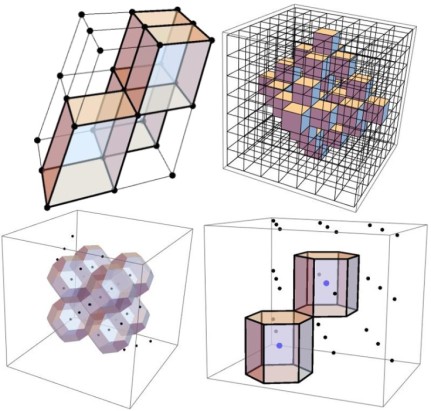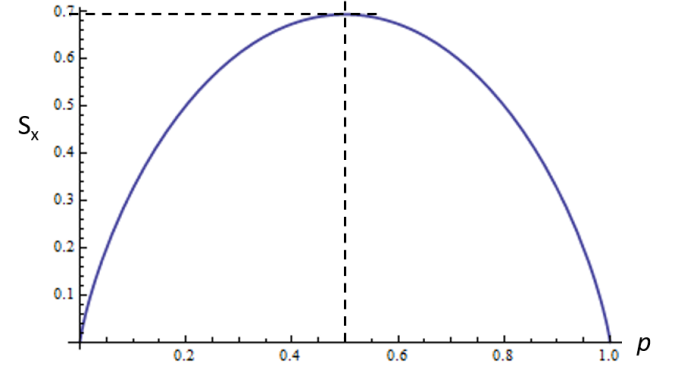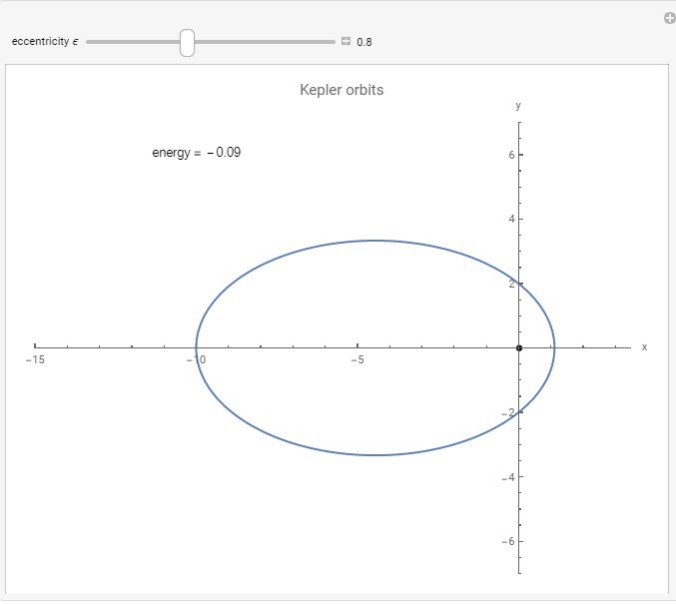Physics
Cellular Automata (CA) on 3D Lattices

This project was made in the Wolfram Language as part of the Wolfram Summer School 2020. The aim was to run Cellular Automaton on 3D lattices. There were two ways to approach the problem. The first was to work with the parallelepiped unit cells defined by the basis vectors of the lattice. This is very similar to running CA on a cubic lattice (in terms of the neighbourhood structure and the rules). The second (and the more interesting) was to run CA on the lattice points themselves, which required working with the Voronoi regions around the points. Visit my Wolfram Community Post published on the Wolfram Community Blog for details.
A Mini Introduction to Information Theory:

As part of the Quantum Chaos course (offered by Prof Pragya Shukla) during my MSc in Physics at IIT Kanpur, we were supposed to make a report and a presentation on any relevant paper. I chose the review paper titled “A Mini Introduction to Information Theory” by Prof Edward Witten of Institute for Advanced Study, Princeton. I also gave a presentation on this topic. In the presentation, after giving basic definitions from the paper, I have tried to establish the connections between the various kinds of entropy quantities that have been defined.
Wolfram demonstrations:
- Spread of a Gaussian Wave Packet with Time: https://demonstrations.wolfram.com/SpreadOfAGaussianWavePacketWithTime/

- Kepler Orbits: https://demonstrations.wolfram.com/KeplerOrbits/

- Fraunhofer Diffraction Through a Rectangular Aperture: https://demonstrations.wolfram.com/FraunhoferDiffractionThroughARectangularAperture/

The above projects are computer simulations made in Mathematica language and have been published on the Wolfram Demonstrations Project page. These aid in the visualisation of the Physics concepts involved.
Simulating Surface Water Waves
The above videos are simulations in Python using pyqtgraph library. They were made as part of the internship at the Institute of Science and Technology in Austria. The first video is for a wave packet following dispersion relation of a free particle given by the Schrodinger equation. The second video is for surface water waves given by the deep water dispersion relation. Click here for more details.
Piezoelectric Energy Harvesting
The above video is the demonstration of the piezoelectric energy harvesting model I made during the fourth semester (2017) of my BSc (Hons) Physics as part of the Renewable Energy and Energy Harvesting course. The idea was to harness the energy lost during boxing practice sessions with the help of piezoelectric discs.
Analysis of LED Spectrum
[slideshare id=234032941&doc=niusreport-200515101259&type=d]
During the summers (2016, 2017), I visited Homi Bhabha Centre for Science Education-Tata Institute of Fundamental Research (HBCSE-TIFR), Mumbai as part of the National Initiative on Undergraduate Science (NIUS) programme. My project involved developing a low-cost method of analysing the spectrum of LEDs using Tracker software.
Experiments on Diffraction

Click on the above link to see the optical diffraction project I did for my class 12 CBSE boards (2015).